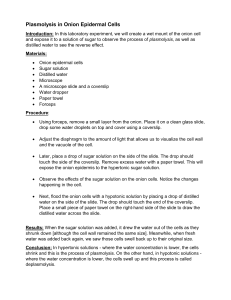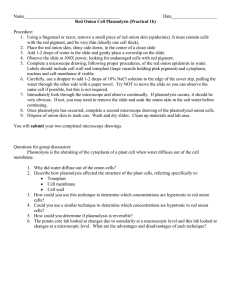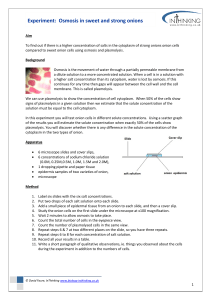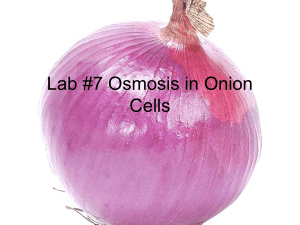2osmosis in living plant cells
advertisement
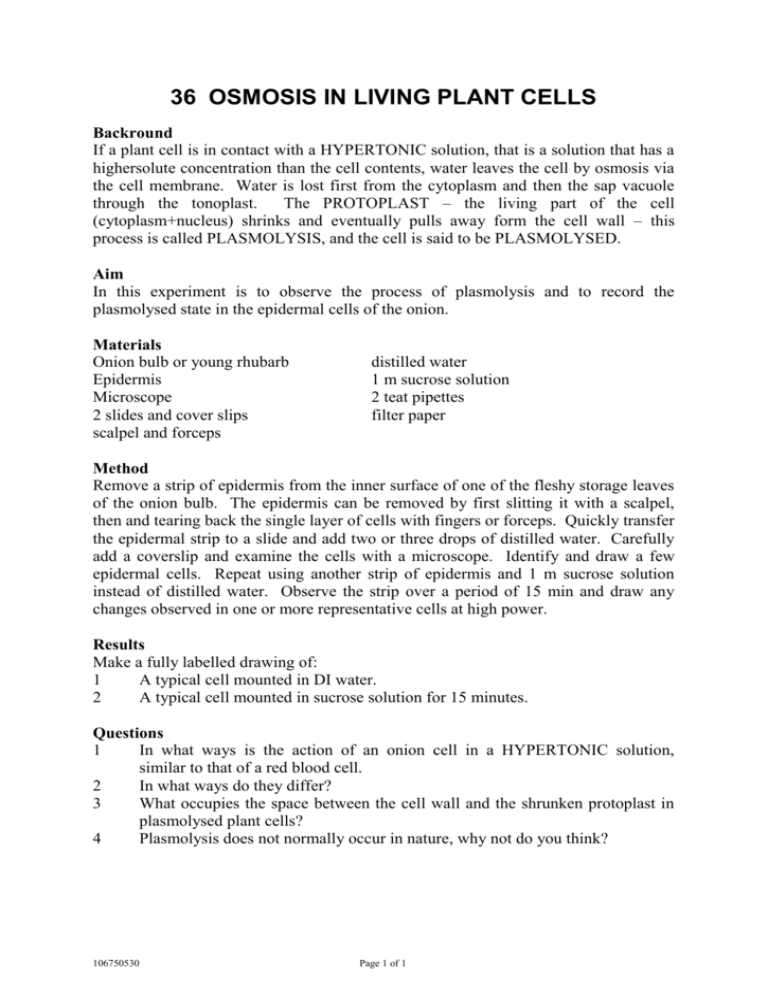
36 OSMOSIS IN LIVING PLANT CELLS Backround If a plant cell is in contact with a HYPERTONIC solution, that is a solution that has a highersolute concentration than the cell contents, water leaves the cell by osmosis via the cell membrane. Water is lost first from the cytoplasm and then the sap vacuole through the tonoplast. The PROTOPLAST – the living part of the cell (cytoplasm+nucleus) shrinks and eventually pulls away form the cell wall – this process is called PLASMOLYSIS, and the cell is said to be PLASMOLYSED. Aim In this experiment is to observe the process of plasmolysis and to record the plasmolysed state in the epidermal cells of the onion. Materials Onion bulb or young rhubarb Epidermis Microscope 2 slides and cover slips scalpel and forceps distilled water 1 m sucrose solution 2 teat pipettes filter paper Method Remove a strip of epidermis from the inner surface of one of the fleshy storage leaves of the onion bulb. The epidermis can be removed by first slitting it with a scalpel, then and tearing back the single layer of cells with fingers or forceps. Quickly transfer the epidermal strip to a slide and add two or three drops of distilled water. Carefully add a coverslip and examine the cells with a microscope. Identify and draw a few epidermal cells. Repeat using another strip of epidermis and 1 m sucrose solution instead of distilled water. Observe the strip over a period of 15 min and draw any changes observed in one or more representative cells at high power. Results Make a fully labelled drawing of: 1 A typical cell mounted in DI water. 2 A typical cell mounted in sucrose solution for 15 minutes. Questions 1 In what ways is the action of an onion cell in a HYPERTONIC solution, similar to that of a red blood cell. 2 In what ways do they differ? 3 What occupies the space between the cell wall and the shrunken protoplast in plasmolysed plant cells? 4 Plasmolysis does not normally occur in nature, why not do you think? 106750530 Page 1 of 1


